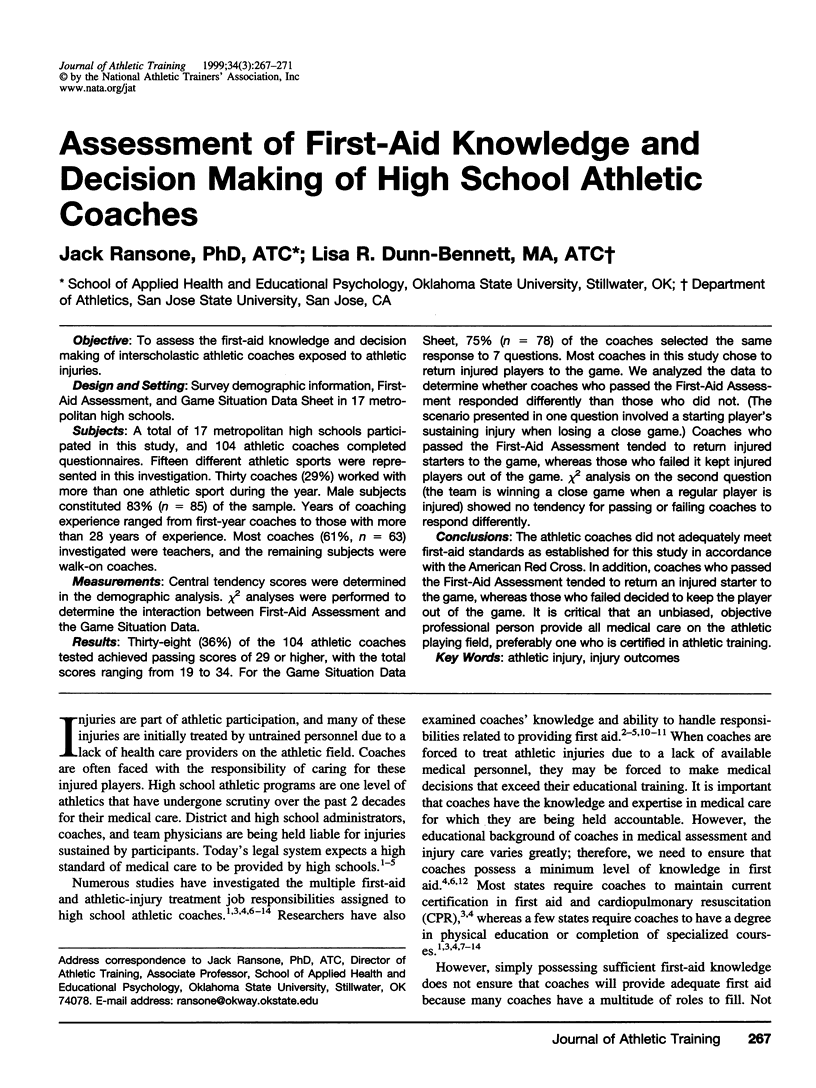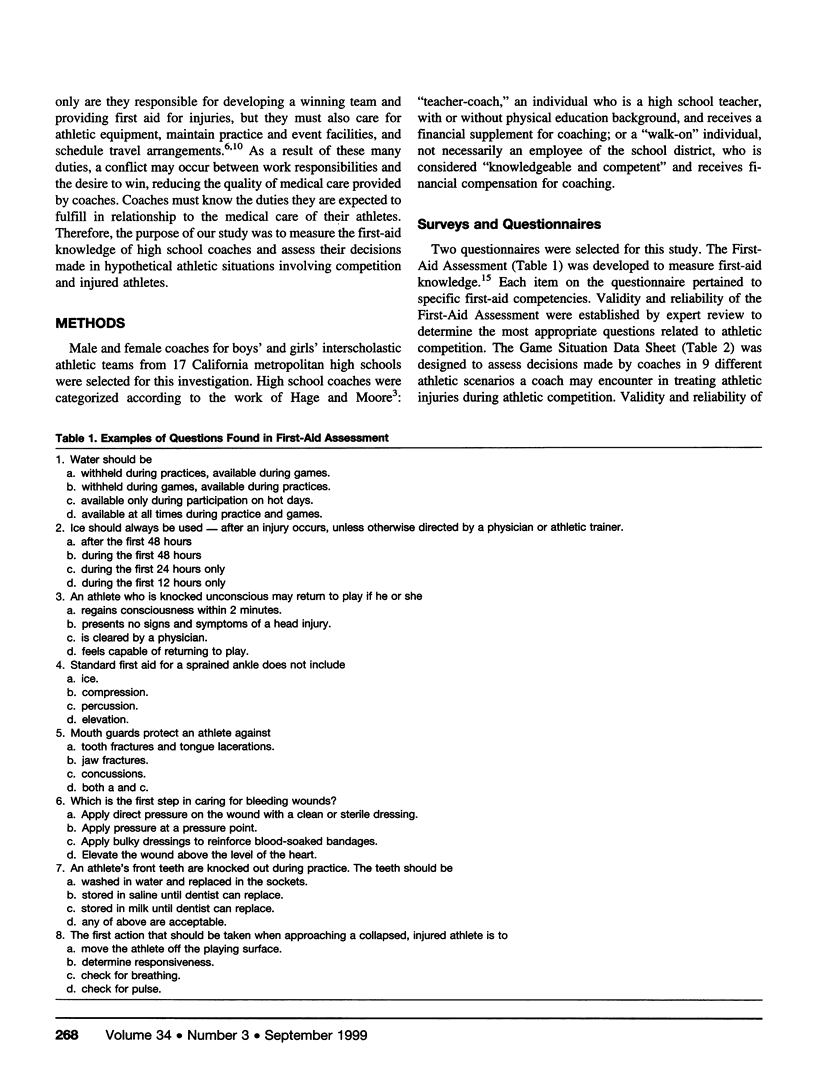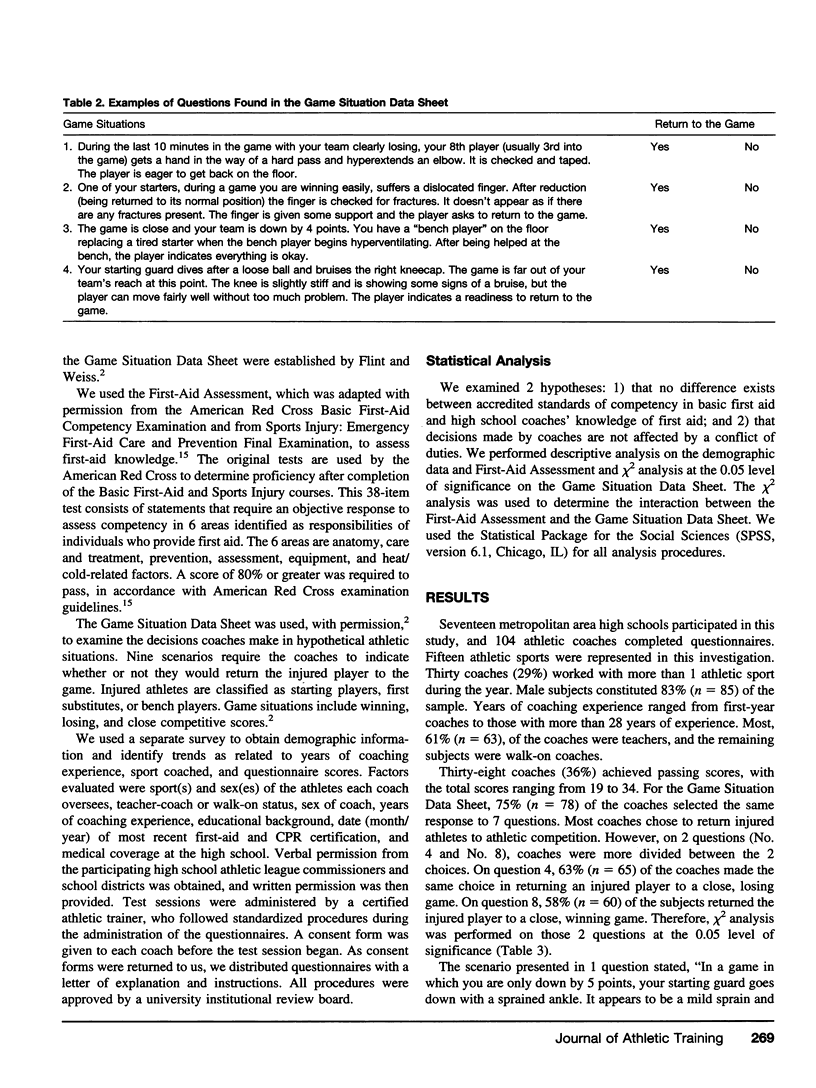Abstract
Objective:
To assess the first-aid knowledge and decision making of interscholastic athletic coaches exposed to athletic injuries.
Design and Setting:
Survey demographic information, First- Aid Assessment, and Game Situation Data Sheet in 17 metropolitan high schools.
Subjects:
A total of 17 metropolitan high schools participated in this study, and 104 athletic coaches completed questionnaires. Fifteen different athletic sports were represented in this investigation. Thirty coaches (29%) worked with more than one athletic sport during the year. Male subjects constituted 83% (n = 85) of the sample. Years of coaching experience ranged from first-year coaches to those with more than 28 years of experience. Most coaches (61%, n = 63) investigated were teachers, and the remaining subjects were walk-on coaches.
Measurements:
Central tendency scores were determined in the demographic analysis. x2 analyses were performed to determine the interaction between First-Aid Assessment and the Game Situation Data.
Results:
Thirty-eight (36%) of the 104 athletic coaches tested achieved passing scores of 29 or higher, with the total scores ranging from 19 to 34. For the Game Situation Data Sheet, 75% (n = 78) of the coaches selected the same response to 7 questions. Most coaches in this study chose to return injured players to the game. We analyzed the data to determine whether coaches who passed the First-Aid Assessment responded differently than those who did not. (The scenario presented in one question involved a starting player's sustaining injury when losing a close game.) Coaches who passed the First-Aid Assessment tended to return injured starters to the game, whereas those who failed it kept injured players out of the game. x2 analysis on the second question (the team is winning a close game when a regular player is injured) showed no tendency for passing or failing coaches to respond differently.
Conclusions:
The athletic coaches did not adequately meet first-aid standards as established for this study in accordance with the American Red Cross. In addition, coaches who passed the First-Aid Assessment tended to return an injured starter to the game, whereas those who failed decided to keep the player out of the game. It is critical that an unbiased, objective professional person provide all medical care on the athletic playing field, preferably one who is certified in athletic training.
Keywords: athletic injury, injury outcomes
Full text
PDF




Selected References
These references are in PubMed. This may not be the complete list of references from this article.
- Abraham J. N. Trainer's role in high school athletics. N Y State J Med. 1970 Feb 15;70(4):537–542. [PubMed] [Google Scholar]
- Flint F. A., Weiss M. R. Returning injured athletes to competition: a role and ethical dilemma. Can J Sport Sci. 1992 Mar;17(1):34–40. [PubMed] [Google Scholar]
- Lindaman L. M. Physician care for interscholastic athletes in Michigan. Am J Sports Med. 1991 Jan-Feb;19(1):82–87. doi: 10.1177/036354659101900114. [DOI] [PubMed] [Google Scholar]
- Moore Harold F. Abortion and the logic of moral justification. J Value Inq. 1975 Summer;9(2):140–151. doi: 10.1007/BF00135806. [DOI] [PubMed] [Google Scholar]
- Robustova T. G., Romacheva I. F., Kats A. G., Orestova E. V., Lomov-Oppokov Iu G. Opyt provedeniia prakticheskogo zaniatiia s ispol'zovaniem skhem orientirochnoi osnovy deistviia i situatsionnykh zadach. Stomatologiia (Mosk) 1989 Mar-Apr;68(2):82–84. [PubMed] [Google Scholar]


